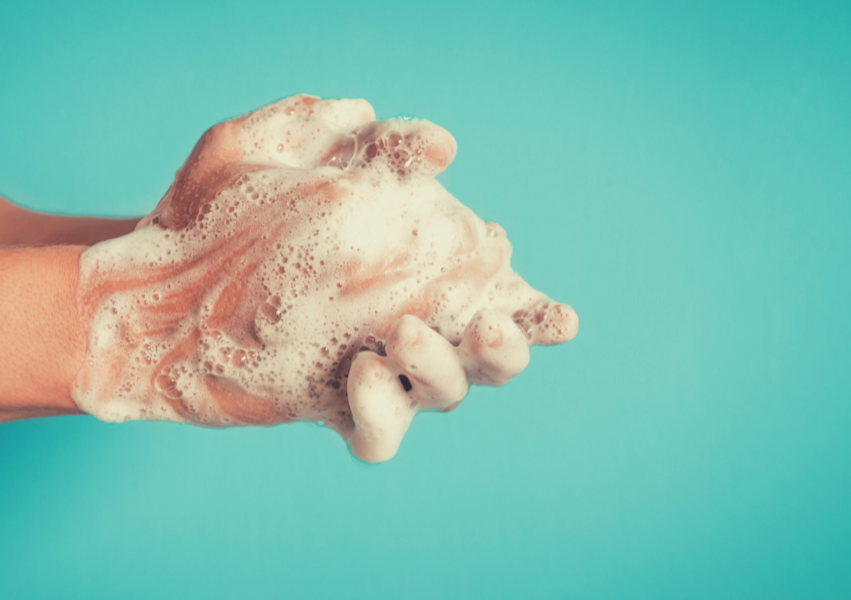- Fast results
- 4,000+ locations
- 4.8 star rating
Need Help? (888) GET LABS



This article is Medically Approved ✓ by Dr. Edward Salko
Knowing you’re hosting parasites in your intestine is like a nightmare that came to life.
But unlike a horror movie, there is no need for you to panic. It is treatable, and your life can certainly go back to normal. However, you must seek action as soon as you can.
Established clinical practices have a straightforward and effective process for dealing with intestinal parasitic infections.
And the first logical step to take is to confirm the type of parasite living in your digestive tract. This can be done through an ova and parasite test (O&P), most commonly known as a stool test.

Cases of intestinal parasitic infections have been recorded in the US each year.
One example is giardiasis. According to the reports of Harvard Health, 1 or 2 among 10,000 Americans contract Giardia lamblia every year. But this only covers patients who have undergone proper diagnosis.
Additionally, children are even more susceptible to intestinal parasitic infection because they tend to play with contaminated soils.
For years, intestinal parasitic infections are either unnoticed or misdiagnosed. Hence, despite available treatment, infected Americans tend to experience aggravated consequences from the condition.
Nonetheless, learning more about parasitic infection and how it is diagnosed with a stool test can be a lifesaver.
Intestinal parasites are commonly made up of worms and protozoans. Their individual effects on the host may vary in terms of severity.
However, they also share the same symptoms when it comes to the manifestation of gastrointestinal distress. But the tricky part of observing these symptoms is that they can easily be mistaken for other conditions such as food poisoning or irritable bowel syndrome.
The tendency is that people will usually self-medicate as the conditions are treatable with over-the-counter medication. As a result, intestinal parasitic infections can go undetected for years.

If you see your doctor and relay the symptoms you observed, you may be asked to take a stool test, particularly the ova and parasite (O&P) test.
Ordering a stool test is especially common for patients who have traveled abroad, ingested contaminated food or water, or have severe symptoms.
It is a standard diagnostic examination for intestinal parasites. The procedure is simple.
You simply collect your stool and send it to the lab for analysis. The laboratory technician will look for the presence of the parasite’s larvae or eggs from your sample. In the case of tapeworms, segments are commonly screened from the stool.

Most of the time, you will be given a plastic sample container. In cases where the container may be too small, you can use a potty or a clean food container and put it in the toilet. Likewise, use some newspaper or plastic to cover the rim of the toilet bowl.
Your stool sample may get contaminated and harbor germs from the toilet, which has nothing to do with your condition. So, be extra careful and make sure the container catches your poo.
You must consider sterility when it comes to collecting a stool sample. The spatula or tiny scooper is generally antiseptic. Hence, it makes sense to use it the way it is intended. Also, don’t fill the container. Instead, collect a sample about the size of a walnut.
Don’t forget to wash your hands with soap and water. Likewise, place all the materials you used in a plastic container and seal or tie it up well enough not to spill the content. Then, dispose of it in the trash bin.
Thanks to continuous research and awareness about intestinal parasites, the types of parasitic infections prevalent in the US have been lowered. Infections such as ascariasis and tapeworm infestation became uncommon in many American cities.
However, according to the American Academy of Family Physicians, four intestinal parasitic infections remain prevalent in the US. The parasites in question are hookworm, pinworm, Giardia lamblia, and Entamoeba histolytica.
The two species of hookworm that commonly infect humans are Ancylostoma duodenale and Necator americanus.
The infection can bear no symptoms if it is light. Otherwise, it can show symptoms of digestive distress, beginning with localized itching.
If it is untreated, the parasite can stay in the intestine for years. According to the CDC, Children with hookworms are at risk of cognitive impairment. Likewise, adults may develop anemia since hookworms feed on the blood.
Transmission: Hookworm larvae can be found in soils, primarily if an infected person’s feces are deposited in the ground or are used as a fertilizer.
Once the larvae mature, they can penetrate the human skin. Those who walk barefoot on contaminated soil are the most susceptible.
Likewise, Ancylostoma duodenale can enter the body system by being ingested through contaminated foods and drinks.
Pinworm (Enterobius vermicularis) is a common worm infection among children. They are white thread-like worms that live in the large intestine and rectum.
One critical effect of pinworm infection is chronic itching in the anal area caused by female pinworms laying their eggs in the surrounding skin.
As a result, an infected person suffers from restlessness, especially because the female typically performs this activity at night.
Transmission: Since pinworm infection takes the fecal-oral route, its mode of transmission is through direct contact with the anal region or through fecal contamination. You may harbor pinworms through infected beddings, clothes, food, and other objects.
Tape Test: If you suspect having pinworms, you can perform a tape test. Once you get up in the morning, grab a transparent adhesive tape. Press the sticky side on the skin surrounding the anus. The eggs deposited by the female pinworm will attach to it.
Bring the tape during your doctor’s appointment. It will be sent for analysis through microscope analysis to confirm the presence of the larvae.
According to the CDC, it is best to perform the tape test three times in three consecutive mornings to collect enough pinworm eggs.
Giardia is a protozoan that causes giardiasis, an infection in the small intestine. It is commonly deposited via fecal disposal in rivers, lakes, and pools.
Individuals who frequently engage in recreational water activities are susceptible to giardiasis, especially if there is an outbreak or known cases in the area.
If left untreated, giardiasis can lead to drastic weight loss and dehydration from diarrhea.
Transmission: A person can harbor Giardia lamblia by ingesting contaminated food or water. These protozoans can also be taken from infected objects.
Entamoeba histolytica is a protozoan responsible for the development of amebiasis or amoebic dysentery. This parasite will find its new home in the intestines of the infected individual.
If the condition is not diagnosed and treated on time, the mature parasite can invade the small intestine walls and reach the blood vessels.
Once they get into the bloodstream, they could end up in vital organs such as the liver, heart, and brain. The Entamoeba can cause abscesses, severe illnesses, and even death this migration aggravates.
Transmission: The most common mode of transmission for Entamoeba histolytica is through drinking infected water or eating contaminated food.
Also, you can potentially harbor the protozoan by making close contact with an infected individual who has recently touched or got closer to the protozoa-ridden feces.
Preventing intestinal parasitic infection boils down to hygienic practices. Those that live in areas without proper waste disposal and are generally unsanitary have a higher chance of getting the parasites.
To avoid developing these infections, here are simple actions you can take.

Washing your hands before you eat should be an automatic habit to avoid ingesting parasites and germs.
If you are into gardening, always bear in mind that worms are regular residents of the soil.
But regardless of your activity, handwashing should be a custom wherever you are. Use soap and water to remove parasitic larvae and eggs from your skin.

Parasites can dwell on foods such as fruits and vegetables. Rub the produce while under running water to get rid of the dirt and germs.
You can use a vegetable brush from portions that can’t easily be cleaned by running water.

When you freeze meat, you kill off potential disease-causing microbes to grow or at least survive in the environment. The parasite’s functions are also halted in cold temperatures.

If you have gone to places outside the country or state for a week or more, it is recommended that you consult with your doctor after you return.
This is not just about parasitic infection but more of checking critical changes in your body related to change in temperature and other factors.
Naturally, if you observe symptoms of infection, book an appointment with a doctor immediately.

Before you plan to go swimming on a certain lake or swimming pool, learn not just the directions but if cases of parasitic infection have been recorded recently in the area.
Indeed, this seems like additional work, but it’s truly better to be safe than sorry. You can ask the person in charge in the place or scan online for updated outbreaks or cases.
Intestinal parasitic infections have treatment that usually comes in the form of prescriptions. These parasites are known to be resilient while inside your digestive tract.
If you have a weakened immune system due to another medical condition such as HIV infection, you may experience severe symptoms of the infection.
While some people manage to get rid of the parasitic infection on their own, most cases require direct help from oral medications.
If you have been exposed to contaminated food, drinks, or objects, it is best to see your doctor so you can undergo an ova and parasite test or stool test.
The earlier the infection is diagnosed, the sooner you get the proper treatment.

© Copyright 2025 Personalabs. All Rights Reserved.